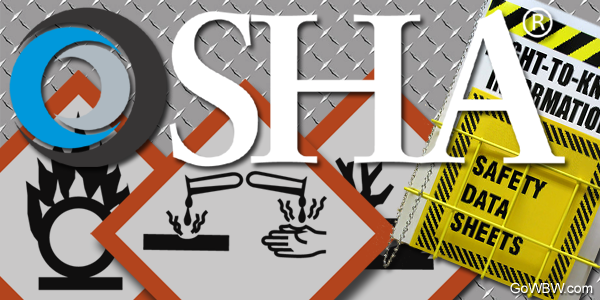
Federal OSHA coverage
Federal OSHA with their state partners they have approximately 2,200 inspectors responsible for the health and safety of 130 million workers, employed at more than 8 million worksites around the nation — which translates to about one compliance officer for every 59,000 workers.
Federal OSHA has 10 regional offices and 90 local area offices.
OSHA budget
FY 2013: $535,246,000
FY 2014: $552,247,000
FY 2015: $552,787,000
OSHA inspections
FY 2014 total federal inspections: 36,163
FY 2014 total State Plan inspections: 47,217
Worker injuries, illnesses and fatalities
4,585 workers were killed on the job in 2013 [BLS 2013 workplace fatality data*] (3.3 per 100,000 full-time equivalent workers) – on average, 88 a week or more than 12 deaths every day. (This is the second lowest total since the fatal injury census was first conducted in 1992.)
817 Hispanic or Latino workers were killed from work-related injuries in 2013–on average, more than 15 deaths a week or two Latino workers killed every single day of the year, all year long.
Fatal work injuries involving contractors accounted for 16 percent of all fatal work injuries in 2013.
Fatal Four
These "Fatal Four" were responsible for more than half (57.7%) the worker deaths in 2013, BLS reports.
- Falls — 302 (36.5%)
- Struck by Object — 84 (10.1%)
- Electrocutions — 71 (8.6%)
- Caught-in/between — 21 (2.5%)
Top 10 most frequently cited OSHA standards violated in FY2014
The following were the top 10 most frequently cited standards by Federal OSHA in fiscal year 2014 (October 1, 2013 through September 30, 2014):
- Fall protection, construction (29 CFR 1926.501) [related OSHA Safety and Health Topics page]
- Hazard communication standard, general industry (29 CFR 1910.1200) [related OSHA Safety and Health Topics page]
- Scaffolding, general requirements, construction (29 CFR 1926.451) [related OSHA Safety and Health Topics page]
- Respiratory protection, general industry (29 CFR 1910.134) [related OSHA Safety and Health Topics page]
- Powered industrial trucks, general industry (29 CFR 1910.178) [related OSHA Safety and Health Topics page]
- Control of hazardous energy (lockout/tagout), general industry (29 CFR 1910.147) [related OSHA Safety and Health Topics page]
- Ladders, construction (29 CFR 1926.1053) [related OSHA Safety and Health Topics page]
- Electrical, wiring methods, components and equipment, general industry (29 CFR 1910.305) [related OSHA Safety and Health Topics page]
- Machinery and Machine Guarding, general requirements (29 CFR 1910.212) [related OSHA Safety and Health Topics page]
- Electrical systems design, general requirements, general industry (29 CFR 1910.303) [related OSHA Safety and Health Topics page]
Making a Difference
- In four decades, OSHA and their state partners, coupled with the efforts of employers, safety and health professionals, unions and advocates, have had a dramatic effect on workplace safety.
- Since 1970, workplace fatality rates have been reduced by more than 66 percent and occupational injury and illness rates have declined by 67 percent. At the same time, U.S. employment has almost doubled.
- Worker deaths in America are down–on average, from about 38 worker deaths a day in 1970 to 12 a day in 2013.
- Worker injuries and illnesses are down–from 10.9 incidents per 100 workers in 1972 to 3.3 per 100 in 2013.
Want to improve EHS processes with best practices and standards? Click Here to see the Wise Businessware EHS Software Suite.


